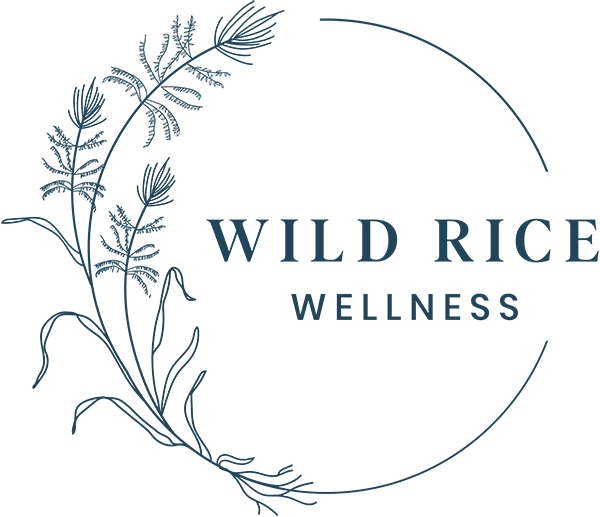
What is the Gut Microbiome?
I thought a good way to start the new year would be to go deep on one of my favorite topics, the gut microbiome! In this series of blogs over the next several weeks we will discuss the following topics: the gut microbiome, dysbiosis, increased intestinal permeability (aka leaky gut), the 5R gut repair program, and foods, supplements and practices that promote the best gut health.
First up…What is the gut microbiome and why is it important?
The gut microbiome is getting its much deserved time in the spotlight. The microbiome is a community of 50-100 trillion bacteria, viruses, fungi and protozoa. These organisms can be found in the gut which is what most people think about when they hear “microbiome” but we also have microbiomes in our mouth, on our skin, the female vaginal canal and even the lungs. Today we will discuss the gut microbiome which makes up 99% of the human microbiome and its important role in our health.
It is a complicated ecosystem that is different in everyone. Changes in the gut microbiome have been implicated in obesity, type II diabetes, inflammatory bowel disease, atherosclerosis, Alzheimer’s disease and Parkinson’s disease, mood disorders and more. Over the past decade there has been an increase in learning more about the gut microbiome and I suspect in the next 10 years we will have many more answers.
What affects the gut microbiome?
There are many things that affect the gut microbiome, both positively and negatively including:
- Diet (macronutrients, fiber, phytochemicals, alcohol)
- Hygiene (excessive)
- Type of birth (vaginal vs C-section)
- Fecal bacteriotherapy transplants
- Surgery (gastric bypass)
- Aging
- Chronic disease
- Stress (social, emotional, physical)
- Medications (antibiotics, NSAIDs, Proton Pump Inhibitors, Hormone Replacement Therapy)
Conversely the gut microbiome affects how we absorb nutrients, drug metabolism, the immune system and messages we send to our brain. It is thought that around 70% of the immune system is in the gut so optimizing gut function and microbiome health is key in optimizing your immune status.
We all have unique microbiome communities that have what we consider commensal or “good bacteria.” These commensal bacteria help to keep the gut healthy by maintaining an adequate mucus layer protecting the lining of the gut, making neurotransmitters and short chain fatty acids which promote health of the gut and immune system. The commensal bacteria turn off genes that encode for inflammation thereby inhibiting chronic disease. Bacterial diversity increases with age through adulthood and then diminishes into elderhood.
In some individuals there can be colonization of what we consider “pathogenic” bacteria if they are growing in abundance. When there is an overgrowth of pathogenic bacteria this is what we call dysbiosis.
What is dysbiosis?
Dysbiosis is a disturbance in the gut microbiota homeostasis due to am imbalance in the gut flora itself, changes in their functional composition or metabolic activities (blood sugar regulation and metabolite production). It also has to do with how the microbiome acts on a susceptible host. Some are able to deal with minor imbalances with little consequence and others may experience a cascade of problems. Dysbiosis can present in different ways: GI symptoms (like constipation, diarrhea, bloating, gas), skin conditions (like eczema or acne), neurologic symptoms (migraines, neuropathy, brain fog, fatigue), and joint pain.
There are are three types of Dysbiosis:
- Loss of beneficial organisms
- Excess growth of potentially harmful organisms
- Loss of overall diversity
These can occur at the same time, which is often the case (such as after antibiotic use)
There are many things that contribute to dysbiosis and microbiome composition and the good new is, many can be modified. One that I find very fascinating is the role of early life events that set up the microbiome in the first years of life such as being born via c-section vs vaginally, being breast vs formula fed, early life antibiotics and probiotics, the physical environment that the child grows up in (with pets, in a rural area such as a farm vs excessively clean urban environment). This is known as the Hygiene Hypothesis where it has been shown that kids who grow up in rural areas, on farms or with pets have greater immune tolerance than those who grow up in more clean and sterilized environments. Kids who play in the dirt and are exposed to pets/animals develop a more diverse microbiome which enhances their immune system leading to less allergies, sensitivies, atopic disease like eczema and asthma.
What triggers dysbiosis?
- Diet
- Stress (physical or emotional)
- Early life events (type of delivery, breastfed vs formula fed, early life antibiotics, introduction to foods, physical environment)
- Infections
- Intestinal inflammation
- Various diseases (IBD, autoimmune disease, diabetes)
- Impaired digestion (low stomach acid, Proton Pump Inhibitor use)
- Toxins
- Nutritional insufficiencies
- Various medications (antibiotics, PPIs, Hormone replacement therapy)
As you can see the gut microbiome is a complex ecosystem within us that is vitally important to many aspects of our health. In the coming weeks I will discuss more about the microbiome and what we can do to optimize our gut health to improve our overall health and longevity!
If you are interested in up-leveling your health this new year, book a free 15 minute consultation below! Click HERE to learn what services Wild Rice Wellness has to offer, including personalized Functional Medicine care and gut microbiome testing!
- References:
- Yano JM, Yu K, Donaldson GP, et al. Indigenous bacteria from the gut microbiota regulate host serotonin biosynthesis. Cell. 2015;161(2):264-276. doi:10.1016/j.cell.2015.02.047.
- Galland L. The Gut Microbiome and the Brain. Journal of Medicinal Food. 2014;17(12):1261-1272. doi:10.1089/jmf.2014.7000.
- Chassaing B, Kumar M, Baker MT, Singh V, Vijay-Kumar M. Mammalian Gut Immunity. Biomedical journal. 2014;37(5):246-258. doi:10.4103/2319-4170.130922.
- West CE, Renz H, Jenmalm MC, et al. The gut microbiota and inflammatory noncommunicable diseases: Associations and potentialsfor gut microbiota therapies. Journal of Allergy and Clinical Immunology. 2015;135(1):3-13. doi:10.1016/j.jaci.2014.11.012.
- Marchesi JR, Adams DH, Fava F, et al. The gut microbiota and host health: A new clinical frontier. Gut. 2016;65(2):330-339. doi:10.1136/gutjnl-2015-309990.
- West, C. E., et al. (2015). The gut microbiota and inflammatory noncommunicable diseases: Associations and potentials for gutmicrobiota therapies. Journal of Allergy and Clinical Immunology, 135(1), 3-13. doi:10.1016/j.jaci.2014.11.014
- Round JL, Mazmanian SK. The gut microbiota shapes intestinal immune responses during health and disease. Nature Reviews Immunology. 2009;9(5):313-323. doi:10.1038/nri2515.
- For additional references, see References: Contributors to Dysbiosis
- Carding S, Verbeke K, Vipond DT, Corfe BM, Owen LJ. Dysbiosis of the gut microbiota in disease. Microbial Ecology in Health and Disease. 2015;26:10.3402/mehd.v26.26191. doi:10.3402/mehd.v26.26191.
- Arrieta M-C, Stiemsma LT, Amenyogbe N, Brown EM, Finlay B. The Intestinal Microbiome in Early Life: Health and Disease. Frontiers in Immunology. 2014;5:427. doi:10.3389/fimmu.2014.00427.
